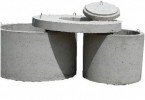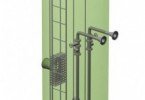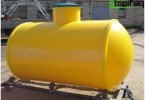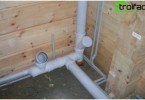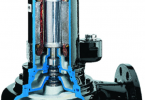Storm sewer
Storm sewage (also called rain and storm) is designed to collect, drain from the roofs of houses, land, road surfaces of water that appears as a result of precipitation. Storm drainage (not to be confused with deep groundwater, designed to lower the groundwater level!) Is especially relevant for areas located in lowlands, for flood areas, for areas where significant rainfall occurs. Indeed, large water can lead to water flooding, erode the foundation, flood the basement and swamp the soil. Rain sewer is designed to protect the house, the site from such troubles.
Content
- The design of the storm drain system, types
- Classification by precipitation method
- Types of drainage by types of drainage
The design of the storm drain system, types
Storm sewer – it is a system of special trays, pipes, sand traps, plugs, siphons, storm water inlets (or storm water wells) and other elements depending on its types. The storm sewer scheme will include various elements in a particular case. The main purpose of the system: to collect surface water in a single stream and direct it to the sewer.
Important! Do not drain water from a storm sewer into a deep soil drainage system! They are often installed parallel to each other at the same angle, but these are two different systems. Storm drainage is done above the ground.
Classification by precipitation method
1. Open type (surface drainage) – rainwater is discharged by a system of open gutters (channels, trays) outside the site. Trays for storm sewers are often buried, fixed with cement mortar or installed in paths, blind areas and other elements. Special grates for storm sewers (removable) are installed on the gutters from above. The open type system is most often used in private small areas, in small settlements with a low population density.
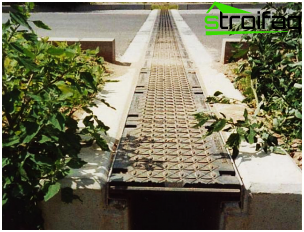
Open storm storm drain looks good as an element of landscape design
2. Closed type (deep drainage) – water is collected by special built-in trays, sand traps. Then it gets through the pipes into storm water inlets (storm wells), and then it is sent to the sewer network via an inclined line or with the help of pumping equipment.
Having passed the sewer collector, it enters thalwegs, sewage treatment plants, and artificial reservoirs. This system is used in cities, large settlements, sometimes in private areas..
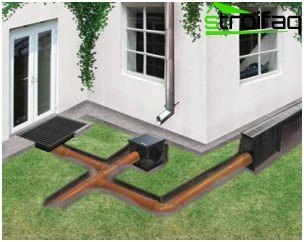
Closed storm stormwater will be completely hidden from view
3. Mixed type – consists of underground pipes and street trays. In this design, storm drains are drained by gravity, with the exception of cases of adverse terrain. The storm network route is laid along the shortest distance to the outlet point in the collector or body of water. Use non-pressure reinforced concrete pipes. This option is suitable for reducing construction costs..
Types of drainage by types of drainage
1. Point storm drainage. It is carried out with the use of local drainage systems (wells, storm water inlets) in order to collect water from any one point site, for example, from the roof of the cottage. They are mounted under drainpipes or watering taps. They have a removable grill and are equipped with a filter basket that traps debris brought by water. Connect to underground sewer pipes, that carry a stream of storm water into the sewer well.
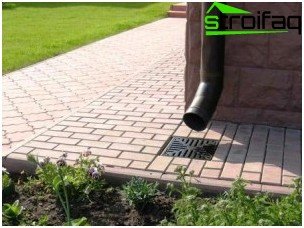
Point drainage – an element of the drainage system
2. Linear storm drainage is carried out in order to collect precipitation from a significant area. Designed to solve the problem of wastewater complex.
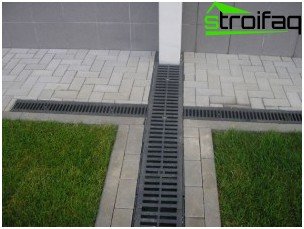
The linear drainage system is designed to drain drains from a large area
Used: linear drainage systems (gutters, trays, channels) and sand traps – containers that trap sand and small debris. Inside the sand trap there is a basket in which trash accumulates. Storm sewer cleaning begins with emptying these baskets.
Storm sewer design
Stormwater and storm water treatment facilities are included in all development projects of large settlements and industrial territories. But many owners of private estates will have to take care of building such a structure on their own: consult a specialist, or make a storm drainage with your own hands. There is nothing fundamentally complicated in this, especially if there is sewage in the village, and you need to connect a stormwater to it.
Sometimes it’s enough to dig a gutter or just put a barrel under the gutters. But if there is no sewage in the flood hazardous area, you will have to dig trenches, create a rain sewer of closed or mixed type. In any case, this is preceded by an accurate calculation, a lot of preparatory work.
SNiP and necessary documentation
The design of the storm must be carried out in accordance with regulatory act SNiP 2.04.03 – 85 “Sewerage. External networks and facilities. ” Before this, it is necessary to draw up the following working documentation:
– general data and working drawings;
– sewer network plan;
– network profile in longitudinal section;
– statement of planned volumes of work.
Parameters required for design and calculations
1. The landscape and geological features of the territory
2. Architectural specifics of structures
3. The average rainfall
4. Locations of utilities
5. Flow area
Installation of precipitation system
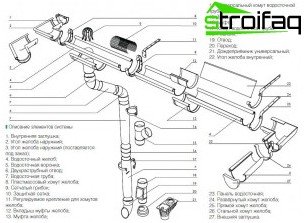
Storm sewer assembly
1. First, mark the territory
2. Prepare drain pipes (most often PVC with a diameter of approximately 110 mm), which will be connected by a double sleeve.
3. Dig trenches and carefully compact the soil, make a sand cushion (or crushed stone) about 8 cm thick, and then lay pipes. The slope of storm sewers towards the spillway should be 1-2 cm / meter. The earth is poured back and thrombosed in layers.
Important! The depth of the storm sewer is determined by the strength of the pipes, which are divided by load classes: A 15; B 125; C 250; D 400; E 600; F 900. The less durable pipes are used, the smaller the topsoil.
4. Mounted storm water inlets-wells.
Note! Stormwater is mounted vertically under a drainpipe.
The wells of storm sewers serve as a place where all storm water flows from the site, and then into the collector. The role of the well is not only to collect water, but also to provide access to the storm system to clean it.
5. All elements of the system are connected to each other and make a trial run of water.
Here are the main steps. It is important to understand, understand what type of rainwater drainage is necessary for you, and then start working.


